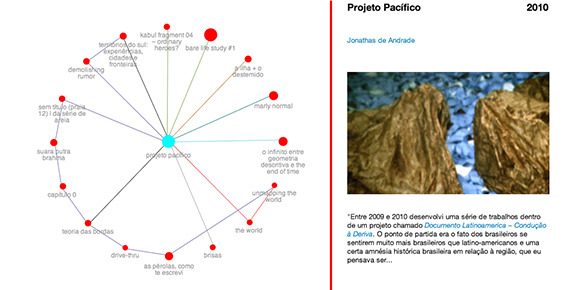Jonathas de Andrade
One of the foremost artists of his generation, Brazil’s Jonathas de Andrade has artworks in the collections of the Guggenheim Museum (New York, USA), the Inhotim Institute (Brumadinho, Brazil), the Museum of Modern Art of Rio de Janeiro (Brazil) and Tate Gallery (London, United Kingdom). Jonathas was shortlisted for the 29th International Biennial of São Paulo (2010) by curator Moacir dos Anjos, who lauds his ability to find utopian projects from the past in a bid to try and grasp why they failed.
Looking to understand Latin American identity and South America’s past, Andrade travelled to six different countries in 2009 and 2010. “The point of departure was the fact that Brazilians see themselves much more as Brazilians than as Latin Americans, as well as Brazil’s historical amnesia regarding the region, which I thought to be related to a post-dictatorship malaise,” he tells PLATFORM:VB. The outcome of his travels is the series Documento Latinoamerica – Condução à Deriva, including the video installation Projeto Pacífico (2010), which is part of Videobrasil’s collection since it was shortlisted for the competitive show Southern Panoramas in the Festival’s 17th edition (2011).
The artist hints at new geopolitical possibilities by detaching Chile from the continent due to an earthquake. This new map of Chile is shown beside a Super 8 stop motion animation piece portraying the memories of a country plagued by the succession of political regimes as contrasting as Salvador Allende’s and Augusto Pinochet’s. The piece also raises historical and geographical issues relating to Bolivia, which lost its coastline to Chile during the Pacific War (1879-1883) – the film’s closing song is a message of solace to the Bolivians who still struggle with this issue. The earthquake can be taken as a metaphor for social and political instability, and its implications can only be imagined.
In a text to be published in the book Unerasable Memories, the curator Pablo León de la Barra interprets the earthquake as the opening up to the possibility of change: “the seismic disturbance is a way of dealing with the post-traumatic effects of Pinochet’s repressive military regime, but also a way to negotiate and let go of constructed national histories and borders.”
The piece raises several uncomfortable questions regarding Chile and its position within Latin America today, such as complaints about the country’s political and geographical isolation, about an “extremely conservative elite who had annihilated the most original aspects of the country’s culture,” and a possible “arrogance of official policies,” as the artist points out.
Learn more about the artist:


